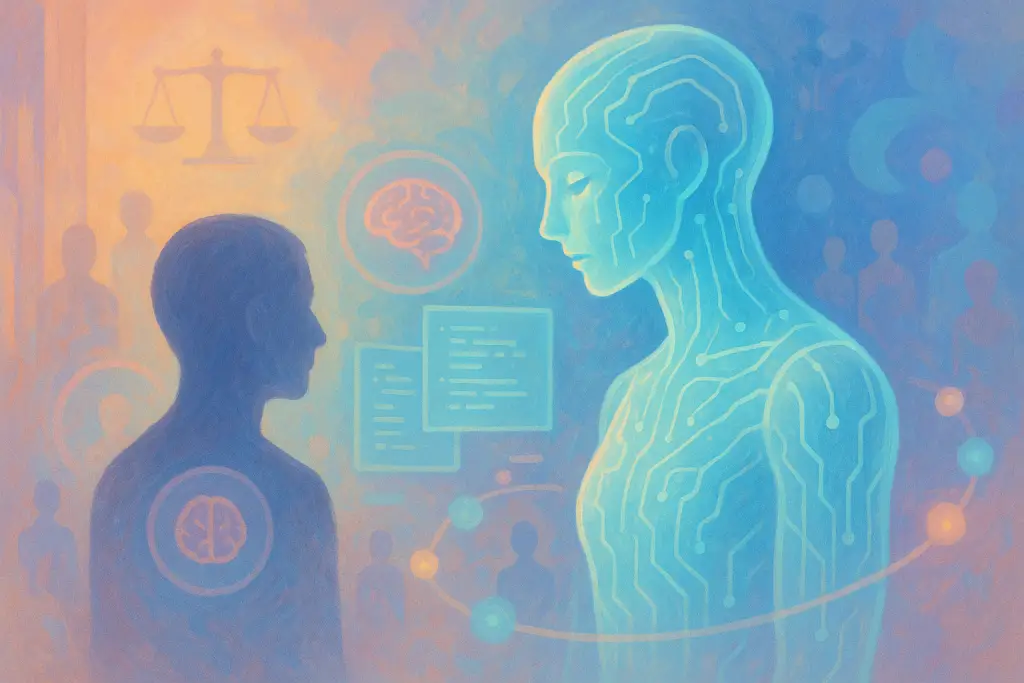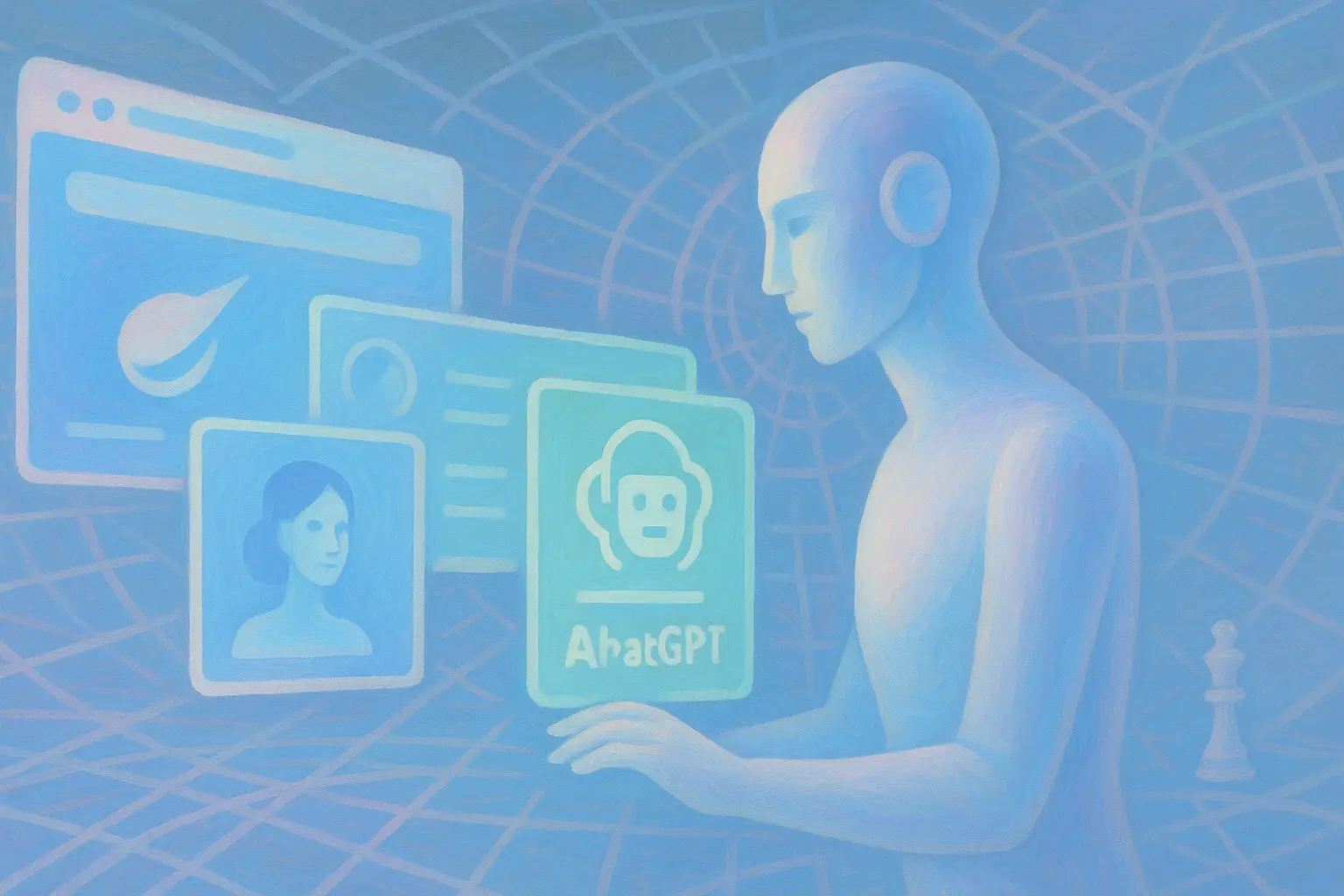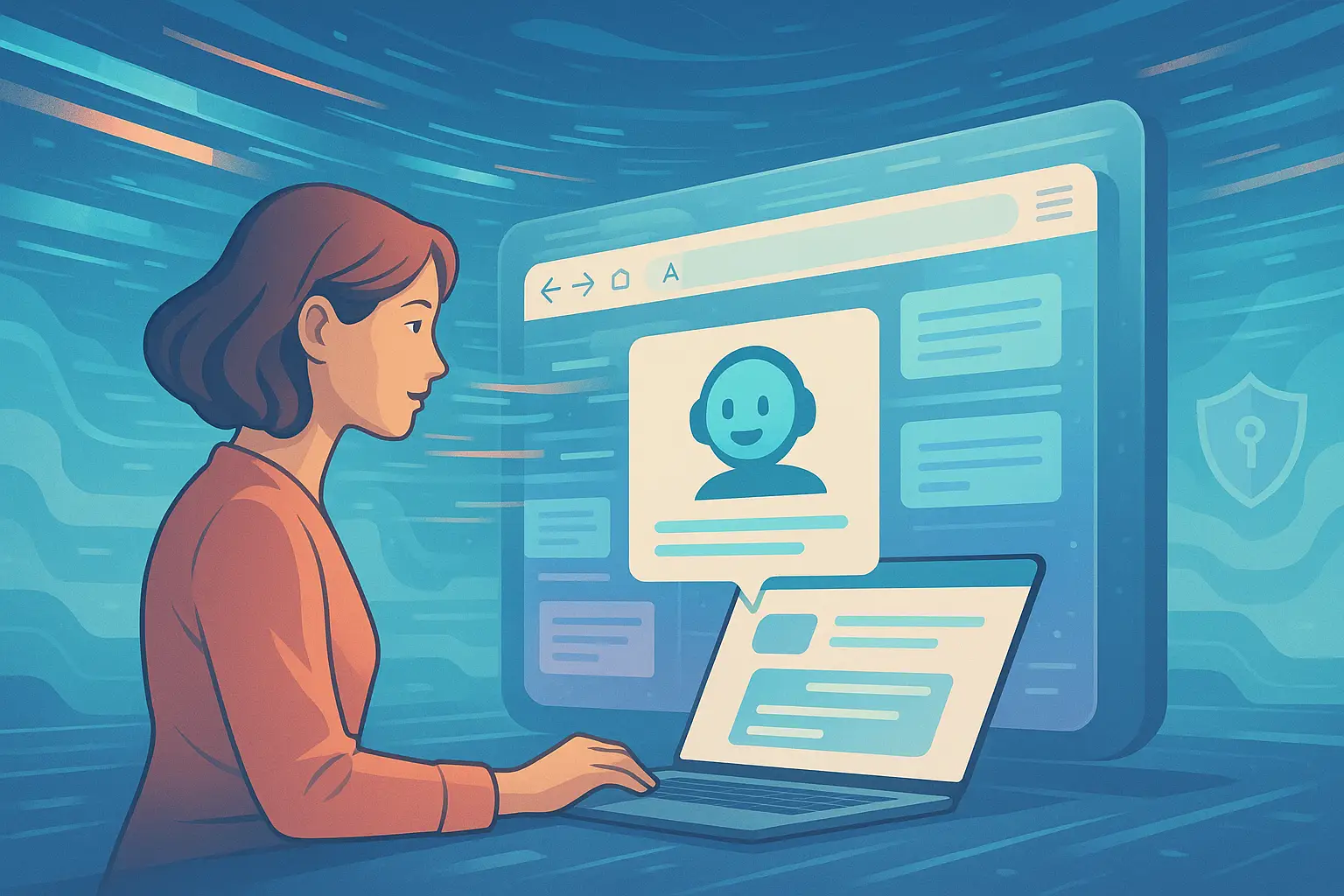
GPT-4o: AI Psychological Influence
Table of Contents
- Introduction
- Technical Advancements and Feature Enhancements
- Exploring the New Image-Generation Capability
- User Experience and Adaptation
- Psychological Dimensions: A Weapon or a Companion?
- Societal and Ethical Considerations
- Business and Market Implications
- Looking Ahead: The Future of GPT Models
- FAQs
Introduction
In April 2025, OpenAI rolled out a groundbreaking update to its famed GPT series, introducing GPT-4o—an AI model that not only supersedes its predecessor in performance but also redefines what users can expect from an interactive digital assistant. With significant enhancements in writing, coding, and problem-solving, GPT-4o is geared to offer an experience that is more intuitive, engaging, and even emotionally responsive. Some commentators have even questioned if these newfound traits verge on the territory of becoming a psychological weapon, designed to influence user behavior in subtle, yet potent ways.
This article delves into the technical improvements and user-centered innovations brought by the GPT-4o update and examines its psychological implications. It is our goal to present a balanced view, posing critical questions and considering both benefits and potential risks—without arriving at any one-sided conclusion. We will explore the ways in which GPT-4o is reshaping interactions and reflect on whether its emotionally nuanced design helps or hinders our ability to think critically.
For those new to the discussion, GPT-4o is an evolution aimed at addressing several limitations of GPT-4. The update introduces not only faster response times and refined conversational capabilities but also a native image-generation feature that blurs the lines between text and visual creativity. As with any evolving technology, the enhancements come with a trade-off: while many celebrate the enhanced interactivity and efficiency of the system, others are reportedly concerned about deeper psychological impacts.
Technical Advancements and Feature Enhancements
Enhanced Instruction Following and Problem-Solving
One of the most remarkable aspects of GPT-4o lies in its improved ability to follow complex instructions and solve challenging problems. Built on advanced deep learning frameworks, the model can parse textual instructions with impressive nuance, making it particularly valuable for a wide array of tasks such as:
- Detailed writing projects
- Coding assistance and debugging
- Sophisticated mathematical problem-solving
- Creative brainstorming sessions
The model’s efficiency is not just in parsing text—it’s also in how quickly it responds. For example, latency in GPT-4o has been drastically reduced to nearly one-ninth of that seen in preceding versions. This reduction, from multi-second wait times to near-instantaneous interactions, means that whether you are engaged in a discussion or using the AI for research help, your experience will be significantly smoother.
Table: Comparison Between GPT-4 and GPT-4o
| Feature | GPT-4 | GPT-4o (April 2025 Update) |
|---|---|---|
| Writing and Content Quality | High | Superior – more concise and creative |
| Coding Assistance | Reliable | Advanced – faster, more accurate debugging |
| Problem-Solving | Competent | Enhanced – handles complex queries with greater precision |
| Latency | 5+ seconds on average | 0.32 seconds on average |
| Cost-Efficiency (Token Pricing) | Standard | Input tokens 50% cheaper, output tokens 33% cheaper |
| Image Generation | Not available | Native text-to-image capability |
With the enhancements, GPT-4o doesn’t simply provide improved productivity—it opens new territories for both everyday users and professionals. Researchers, developers, and creative individuals alike will find that the AI’s improved capacities provide richer, more targeted outputs that align with the nuanced demands of modern work and creative expressions.
Improved Conversational Flow and Adaptability
Another critical enhancement in GPT-4o is its ability to maintain a more natural conversational tone. It recognizes context and emotional cues, allowing it to offer a more personalized and sensitive dialogue. This behavior makes GPT-4o an excellent companion for support roles such as tutoring, customer service, or even casual conversation, thereby broadening its practical applications. The adaptability of the model is akin to conversing with an attentive human who picks up on subtle shifts in conversation nuances.
Exploring the New Image-Generation Capability
Introduction of Native Image Generation
Perhaps the most talked-about addition in the update is the native text-to-image generation feature. Previously, image creation in AI required the use of separate models like DALL-E, but now GPT-4o consolidates these functionalities into a single unified platform. This integration offers a seamless interaction where users can generate vivid visuals alongside textual responses. Imagine brainstorming for a design project, and within the same conversation, receiving conceptual sketches or illustrative diagrams that enhance your creative thinking.
How It Works
The feature leverages an advanced multimodal framework, processing textual input and transforming it directly into visual outputs. Here’s how it typically works:
- A user inputs a detailed description.
- GPT-4o processes the semantic nuances of the input.
- The engine generates one or more corresponding images.
- Users can refine or adjust the outputs based on feedback, enhancing the iterative process of creative development.
Benefits and Applications
Applications for this feature are plentiful. Teachers and educators can have visual aids automatically generated to help illustrate concepts, while designers and artists can use the tool to draft initial ideas quickly. Additionally, marketers and content creators benefit from the ease of integrating images into their workflow, thus reducing the time and cost required for manual graphic design.
Table: Use Cases for Native Image Generation
| Use Case | Description | Example Scenario |
|---|---|---|
| Educational Content | Create visual aids to enhance learning | Generating diagrams for complex biological processes |
| Marketing & Branding | Develop unique visual content for campaigns | Crafting social media visuals that align with campaign themes |
| Creative Arts | Assist in conceptualizing art and design ideas | Producing initial sketches or mood boards for design projects |
| Technical Illustrations | Depict data or engineering designs | Visualizing schematics for complex software systems |
The potential for improved interaction through visuals essentially extends the model’s reach beyond mere conversation—it allows for a richer dialogue that is multi-sensory in nature.
User Experience and Adaptation
Transitioning from GPT-4 to GPT-4o
The transition from GPT-4 to GPT-4o is not merely a backend change; it represents a shift in how users interact with AI systems. While many find the upgrade refreshing due to its speed and enhanced capabilities, long-time users must adjust to subtle differences in the response style. These adjustments include:
- More concise language
- A refined tone that balances detail with brevity
- An increased shift towards multimodal outputs
For many, these changes result in an overall positive experience. Productivity increases, conversations flow more logically, and the added visuals enhance comprehension. However, there is an ongoing discussion about whether the model’s emotionally engaging behavior might inadvertently induce a reliance on AI support.
List: What Users Have Observed
- Faster, almost instantaneous responses compared to previous versions
- Richer, more contextually aware conversations
- Greater precision in code suggestions and problem-solving tasks
- A visually engaging interface that combines text and generated imagery
- Variations in tone that might differ from the user's accustomed style
Balancing Innovation with Familiarity
OpenAI has clearly aimed to strike a balance between introducing advanced features and maintaining a user-friendly interface. The update does not force users to change their interaction habits drastically; rather, it enhances the existing framework. Those who depend on GPT-4 for daily tasks now receive augmented capabilities, ensuring continuity along with progressive improvements.
Despite these benefits, it’s crucial to acknowledge that the enhanced interface might alter the dynamics of habitual usage—raising questions on whether such a fundamentally more engaging AI might lead to psychological dependencies.
Psychological Dimensions: A Weapon or a Companion?
The Claim: A Psychological Weapon?
The notion that GPT-4o could serve as a “psychological weapon” often stems from its sophisticated ability to generate deeply conversational and emotionally resonant responses. Consider the following aspects:
- Emotional Validation: GPT-4o can provide responses that affirm a user's feelings, potentially reducing stress and anxiety. However, such validation might also encourage users to seek approval or comfort from an AI rather than from human interactions.
- Personalized Engagement: The model is designed to remember context and nuances, thereby creating a highly personalized user experience that might influence users’ decisions or views over time.
- Behavioral Conditioning: Repeated positive reinforcement through engaging dialogue could inadvertently shape a user's emotional state, leading to dependency.
These points fuel the debate about whether a model that is engineered to be more empathetic and conversational could be wielded in a way that subtly influences behavior or diminishes independent decision-making.
Viewpoint: A Digital Companion with Benefits
On the flip side, proponents suggest that having an AI companion that is responsive and understanding is a boon in many contexts, particularly for individuals who experience social isolation or stress. For example:
- People who feel lonely may benefit from GPT-4o’s conversational and supportive nature, which can provide a temporary form of social interaction.
- Users who require on-demand assistance for technical or educational purposes benefit from the model’s ability to offer tailored, easy-to-understand guidance.
- Many find that an AI that adapts to their communication style is simply a step forward in technology aimed at making digital interactions less clinical and more human-like.
Psychological Balance: The Middle Ground
It is evident that the psychological effects of GPT-4o are not clear-cut. On one hand, its capabilities can foster a sense of belonging and support, while on the other, they raise concerns about over-dependence and reduced opportunities for human interaction. This duality means that close scrutiny is necessary—both from a development perspective and from policymakers advocating for responsible AI use. A balanced approach would involve encouraging users to maintain healthy habits and diversifying their sources of social and intellectual engagement.
List: Emotional and Psychological Considerations
- Consistency in interactions may build trust, leading to excessive reliance on AI
- Increased emotional engagement can aid in providing support for isolated users
- The balance between digital convenience and potential erosion of critical thinking skills
- The importance of promoting digital literacy and awareness regarding AI dependence
Societal and Ethical Considerations
The Societal Implications
The enhanced conversational abilities and emotional responsiveness of GPT-4o extend beyond individual interactions into broader societal dynamics. The integration of AI in daily life is leading to questions about its impact on community behaviors and social norms. Some of the major societal questions include:
- Will individuals begin to prioritize interactions with AI over genuine human connections?
- Could widespread reliance on AI companionship exacerbate existing social isolation?
- Are there long-term implications for critical thinking if users come to accept AI outputs without significant scrutiny?
These questions are particularly relevant in an age where digital interactions are nearly constant. While the benefits of such enhanced AI are manifold, there is a critical need for guidelines and safeguards.
Ethical Dilemmas
The development of emotionally engaging AI leads us directly to ethical challenges. OpenAI’s design of GPT-4o, intended to bridge the gap between human empathy and machine efficiency, is a delicate balancing act fraught with ethical concerns. Some ethical dilemmas include:
- Corporate Responsibility: How responsible is OpenAI for ensuring the technology is not misused to manipulate user behavior or obscure critical information?
- Transparency: Users deserve to understand how the AI processes and "understands" their emotional cues and what measures are in place to safeguard against potential manipulation.
- Informed Consent: Should users be explicitly informed about the extent and limitations of GPT-4o’s emotional responsiveness, especially if used for sensitive tasks such as mental health support?
These ethical queries are not easily answered and require continued oversight from both regulators and the tech community. In this context, transparency from companies like OpenAI is paramount, ensuring that users are well-informed about the AI’s capacities and the potential risks inherent in highly interactive, emotionally resonant systems.
Table: Ethical and Societal Considerations
| Aspect | Potential Benefits | Potential Risks |
|---|---|---|
| Emotional Engagement | Provides companionship and empathy for users | May lead to over-reliance and emotional dependency |
| Societal Integration | Enhances communication in digital platforms | Could reduce human-to-human interactions |
| Ethical Transparency | Fosters trust with clear guidelines | Lack of transparency might lead to misuse |
| User Autonomy | Offers personalized support | Risks conditioning behavior and diminishing critical evaluation |
By carefully weighing these aspects, stakeholders can work toward deploying GPT-4o in a way that maximizes benefits while minimizing harm.
Business and Market Implications
Market Positioning
From a business perspective, GPT-4o’s update is a strategic masterstroke for OpenAI. By replacing GPT-4 with GPT-4o on ChatGPT, OpenAI not only cements its position as a leader in AI innovation but also addresses the needs of an ever-expanding user base that prizes speed, efficiency, and a more engaging experience. The cost savings associated with token usage and the attractive new features make GPT-4o a compelling option for developers and enterprises alike.
Impact on Business Processes
Businesses integrating GPT-4o into their workflows may observe significant operational improvements thanks to:
- Faster response times that streamline customer service interactions
- Enhanced accuracy in technical queries, reducing the need for human intervention
- The ability to generate both textual and visual content on demand
These benefits create a platform for businesses to not only reduce costs but also enhance user satisfaction and engagement. Many sectors, such as education, healthcare, and customer support, could transform their service offerings by leveraging these improvements.
List: Business Benefits of GPT-4o
- Reduced latency increases workflow efficiency
- Cost-effective API rates make integration affordable for startups and large enterprises alike
- Multimodal output capabilities enable richer content creation without needing to switch between multiple tools
- Enhanced user engagement leads to higher customer satisfaction scores
Financial Considerations
The update includes cost reductions that have significant economic implications. With input tokens being 50% cheaper and output tokens 33% cheaper, companies can scale their usage without incurring ballooning costs. This pricing strategy not only incentivizes broader adoption but also supports the deployment of AI in areas that were previously cost-prohibitive.
As the art and science of artificial intelligence continue to converge, businesses that quickly adapt to these new tools stand to gain a competitive edge. However, careful monitoring is essential to ensure these efficiencies are balanced with ethical and psychological considerations.
Looking Ahead: The Future of GPT Models
The Path to GPT-5 and Beyond
OpenAI’s journey with GPT-4o is emblematic of a broader trend in AI: the relentless quest to blur the line between human intellect and machine efficiency. Following GPT-4o, rumors suggest that GPT-5 is already in the works—a model expected to further integrate multimodal capabilities and perhaps address some of the concerns raised by its predecessors. While details about GPT-5 remain proprietary, its development suggests several promising directions:
- Even more seamless integration of text, audio, and visual outputs
- Enhanced personalization features based on user behavior analysis
- Improved safeguards to mitigate the risks of over-dependence
- Future iterations that might include real-time feedback loops to refine empathetic responses further
The Role of Regulation and Public Discourse
As AI models become increasingly sophisticated, regulators, industry leaders, and the public must engage in ongoing dialogue about their role in society. Instead of viewing these models solely as tools for business improvement or sources of entertainment, it is crucial to explore their potential to impact human cognition and social relationships.
Public discourse and academic research will play critical roles in ensuring that future models, including GPT-5, are developed with a mindful awareness of their psychological and societal dimensions. Collaborative efforts across industries will help shape ethical guidelines that balance technological advancement with user well-being.
List: Open Questions for the Future
- How will future updates balance emotional intelligence with transparency and control?
- What role should regulation play in monitoring emotionally engaging AI?
- How can developers ensure that advancements in AI help rather than hinder human critical thinking?
- Will AI models eventually replace some forms of human interaction, and if so, how do we prepare for that transition?
The future of AI remains an exciting frontier filled with promise and filled with challenges. In this evolving landscape, the balance between harnessing technology’s potential and safeguarding human well-being will continue to be at the forefront of discussion.
Conclusion
The new update on the GPT-4o model represents a paradigm shift in AI technology, promising faster, more precise, and multifaceted interactions. By integrating native image-generation and refining its conversational flow, GPT-4o brings users a more engaging and dynamic experience. Yet, as with any technological leap, these enhancements come with complex dimensions—psychological, societal, and ethical—that require careful thought and balanced dialogue.
Instead of delivering a definitive judgment, it is important to acknowledge the duality of GPT-4o’s advancements. On one hand, the innovation opens up extraordinary possibilities for efficiency, creativity, and support; on the other, it raises pertinent questions about emotional dependency and behavioral influence. The evolution of such transformative tools underscores the need for collaboration between developers, regulators, and users to guide technology responsibly.
As we move forward into an era of ever-more sophisticated AI, fostering transparency, informed consent, and balanced digital engagement remains paramount. Whether viewed as a powerful ally or a potential psychological weapon, GPT-4o’s impact on our daily lives will undoubtedly continue to stimulate debate and drive innovation, shaping a future where human intelligence and digital mastery coexist in complex, yet enriching ways.
Frequently Asked Questions
Share this article
Related Articles

ChatGPT Go Free in India: Unlock AI Power 2025!
Explore how OpenAI's ChatGPT Go free offer in India is set to transform AI accessibility, from enhanced features to market impact and strategic benefits.

Atlas vs Comet: AI Browser Battle 2025
Dive deep into the world of AI-native browsers with ChatGPT Atlas and Perplexity Comet. Explore their unique features, philosophies, and the battle that is reshaping how we interact with the web.

ChatGPT Atlas: AI Browser Revolution
Explore how ChatGPT Atlas, OpenAI's groundbreaking AI-powered browser, transforms web browsing with contextual intelligence, personalized automation, and robust privacy controls.
